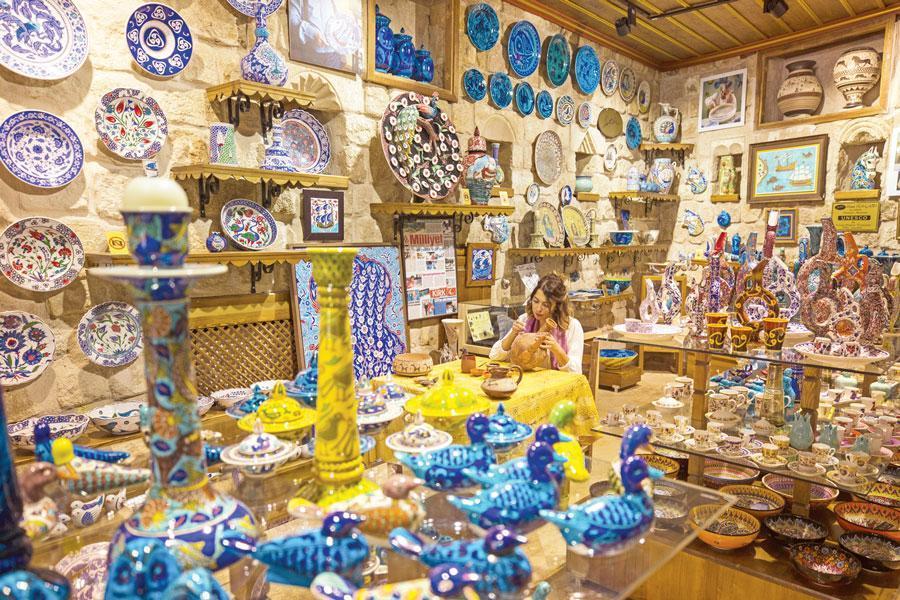
World famous Turkish tile artist Sıtkı Olçar’s dream has come true, thanks to his daughter Nida Olçar.
The artist from the western province of Kütahya, died in 2010, but his daughter is proud to make his dream come true by bringing together the red soil of the Cappadocia region with tile designs.
Sıtkı Olçar, who was selected as a living human treasure by UNESCO, established a business 30 years ago in Cappadocia, which is known for its red soil and potteries along with its fairy chimneys. His dream was to combine red soil and tile designs but due to commercial and other reasons, he returned to his hometown Kütahya without realizing his dream.
His daughter Nida Olçar, who handed over her father’s atelier after his death, decided to open an art gallery in Cappadocia to make this dream come true.
In the gallery, which she opened three years ago, products made with red soil, which are produced from the tuffs of the Erciyes and Hasan mountains, draw great interest from art lovers and foreign tourists as well.
Among the most popular artifacts are the theater tickets of ancient ages, oil bowls and Keşkül’ü Fukara bowls, in which the rich offered food and drink to the poor in the Ottoman era.
Speaking to state-run Anadolu Agency, Olçar said she had left behind 10 years in the art of tile, a traditional handicraft from the 14th century.
Olçar said she was proud to be her father’s student and had established an art center in the Cappadocia region.
“My father wanted the tile designs to be used in potteries unique to our country and other products. Tile processing has continued for the past 10 years in the ateliers opened in Tokat, Konya and Çanakkale. We have been operating an art gallery in Cappadocia for the last three years. We make special products by using the unique red soil of the region and tile designs,” she said.
Olçar spoke about her father’s dream of using red soil.
“We are working on clay and white soil in Kütahya. In this region, there is red soil, which is famous all over the world. We wanted to bring together these two big arts. My father used red soil in his work from time to time and established in this region to carry it further. This was one of his biggest dreams but for some reason, he was unable to make it happen. We have opened this art center to make his dream come true. I had dreamed of it for years too. Fortunately, we did it. Our products have been appreciated here for three years,” she said.
Olçar also noted she would open an exhibition soon to display the artifacts made of red soil and the art of tile.
Sıtkı Olçar
Sıtkı Olçar, born in Kütahya in 1948, used old designs and forms in his works, taking up examples from İznik and Kütahya. He gave them new life in his interpretations, especially by bringing a new dimension and dynamism to Kütahya tile-making, previously thought to have been lost.
Examples of his works are held in many private collections and museums. In his tiling, he was influenced by the traditional work of İznik and Kütahya, but he also sought new forms.
He died in November 2010 of pancreatic cancer.